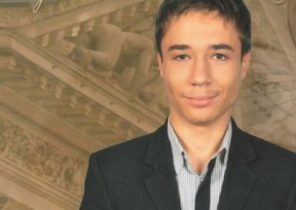
A Presbyterian Minister Thomas Bayes (Thomas Bayes) didn’t even know existed that will make a lasting contribution to the history of mankind. Born in England in the early eighteenth century, Bayes was a quiet man with an inquiring mind. During his life he published only two works: the “Goodness of the Lord”, 1731 in defense of God and of the British monarchy, as well as an anonymous article in support of the calculations of Isaac Newton 1736. However, one argument that Bayes was announced before his death in 1761, determined the course of history. He helped Alan Turing (Alan Turing) to encoder crack the German “Enigma”, the naval forces of the United States to detect Soviet submarines, and statisticians — to establish the authorship of “the memoirs of a Federalist.” But today with the help of it to solve mysteries of the mind.
It all began in 1748, when the philosopher David Hume (David Hume) issued a “Finding of human knowledge” and, among other things, questioned the existence of miracles. According to Hume, the probability of error of people who have seen the resurrection of Christ, outweighed by the probability that this event really happened. But Reverend Bayes such a theory was not to their liking.
 © AFP 2016, Timothy A. ClaryШифровальный machine “Enigma”
© AFP 2016, Timothy A. ClaryШифровальный machine “Enigma”
Firm intention to prove Hume wrong, the Bayes tried to quantify the probability of an event. For a start, he came up with a simple scenario: imagine a ball thrown on a flat table behind you. You can make assumptions about where he landed, but to tell, without looking how you was accurate, it is impossible. Then ask a colleague to throw another ball and tell you whether he went right or left of the first. If the second ball on the right, it is more likely that the first landed in the left part of the table (according to this assumption, to the right of the ball remains where could be the second ball). With each new ball your guess about the location of the first ball will be updated and refined. The idea is Bayes ‘ testimony to the resurrection of Christ likewise point to the authenticity of this event, and cannot be discounted, as did Hume.
In 1767 Bayes ‘ friend Richard Price (Richard Price) has released a paper “On the importance of Christianity, its evidence, and the likely objection” in which he used the ideas of Bayes, challenging the arguments of Hume. Says historian and statistician Stephen Stigler’s (Stephen Stigler), the article price’s “basic probability idea is that Hume has underestimated the value of the number of independent witnesses of the miracle, and the results of Bayes showed how increasing the number of evidence, even unreliable, may be stronger than a small degree of probability of an event and thus transforms it into a fact.”
Statistics grew out of the work of Bayes and price, it has become quite a powerful tool to account for a wide range of uncertainties. In medicine, Bayes ‘ theorem helps to consider the context of diseases with possible causes. In combat, it narrows the space of localization of the positions of the enemy. In information theory it can be used to decrypt messages. In cognitive science it provides an opportunity to understand the meaning of sensory processes.
To apply Bayes ‘ theorem to the brain began in the late nineteenth century. The German physicist Hermann von Helmholtz (Hermann von Helmholtz) used the ideas of Bayes, to represent the idea of transforming sensory data, such as, for example, awareness of space information through a process that he called unconscious inference. Bayesian statistics became popular, and the idea that unconscious mental calculations are likely, by their nature, did not seem far-fetched. In accordance with the “Bayesian brain hypothesis”, brain makes a Bayesian inference to compensate for the lack of sensory information, just as each successive ball thrown on the table, Bayes, fills gaps in information about the location of the first ball. The “Bayesian brain” generates an internal model of the world: expectations (or assumptions) about how different objects look, feel, sound, behave and interact. This system receives sensory signals and approximates what is happening around.
For example, vision. The light is reflected from objects around us and gets to the surface of the retina, and the brain somehow needs to create a three-dimensional image from two-dimensional data. One can obtain a variety of three-dimensional images, as the brain decides what to show us? Probably applies Bayesian model. Seems almost incredible the fact that the brain evolved so that he became capable of doing close to the ideal statistics. Our computers can’t handle such a huge number of statistical probabilities, and we seem to do it constantly. But, maybe, the brain is still not capable of it. According to the theory of sampling, methods of consciousness can approach to Bayesian inference: instead of at the same time to give all of the assumptions that can explain any sensory signal, the brain takes into account only a few of them, selected at random (the number of times when you select each of the assumptions based on the frequency of cases in the past).
This could explain the origin of visual illusions: the brain selects a “best guess” according to the rules of Bayesian reasoning, and it turns out to be false, since the system for creating visual images fills the information void with the selection of an inappropriate internal model. For example, it seems that the two squares on the chess Board have different shades of color or circle first it looks concave, and after turning 180 degrees it becomes convex. In such cases, the brain initially makes a wrong guess about such a simple thing as lighting.
It also helps to explain why the earlier information was obtained, the stronger its influence on the person with his memories, experiences, solutions, explains Alan Sanborn (Adam Sanborn), studying problem behaviour at Warwick University. Potentially people prefer to buy goods from the first they have met the seller. Playing slot machines are more inclined to continue if it began with a win. The first impression is often difficult to refute, even if it is fundamentally wrong. “After receiving the initial information, you will create assumptions which agree with it”, says Sanborn.
This variability goes all the way to the neutron level. “The idea is that the activity of neutrons is a random variable that you are trying to get,” says Lengyel Mate (Máté Lengyel), a neuroscientist from Cambridge. In other words, the variability of neural activity — an indicator of the probability of an event. Consider a simplified example — the neuron responsible for the concept “tiger”. The neuron will oscillate between the two levels of activity high in the presence of a signal of the presence of the tiger and low, which means that the tiger is not. The number of time intervals of high activity of a neuron increases the probability of the presence of the tiger. “In fact, in this case, we can say that the activity of the neuron is a sample from a probability distribution, the scientist said. — So, if to develop this idea in a more realistic and less simplified manner, it includes many things that we know about the neurons and the variability of their responses.”
One of my colleagues at Sanborn’s Thomas hills (Thomas Hills) explains that the methods of our choice for mental imagery in some way remind you of how we are looking for physical objects in space. If you usually take milk in the back of the supermarket, you first go out there, coming for milk in the new store. This is no different from finding inner images in the brain. “You can imagine the memory as a kind of record of rational frequency of events in the world. Memories are encoded in mental images is proportional to past experience. So if I ask you about the relationship with mom, you can start to talk: here is a memory of a positive interaction, here’s another memory about positive interaction, but negative. But the average memories of my relationship with my mother is good, so you answer “good”” says Thomas hills. The brain is a kind of search engine that chooses memories, creating what hills calls the “structures of faith”, the idea of communication with parents, the definition of “dog”, “friend”, “love” and all the rest.
If the search process goes wrong, that is, the brain filters information that is not representative of the experience of the person, if there is a mismatch between expectations and the actual sensor signal, then there depression, obsessive-compulsive syndrome, PTSD and several other diseases.
Not to say that the hypothesis “Bayesian brain” has no enemies. “I think the Bayesian framework as a kind of mathematical language is a powerful and useful means of expressing psychological theories. But it is important to analyze which parts of the theory do provide an explanation,” says Matt Jones (Matt Jones) from the University of Colorado at boulder. In his opinion, the supporters of the “Bayesian brain” rely too much on that part of the theory, which tells about the statistical analysis. “In itself it does not explain the diversity of behavior. It only makes sense in combination with what in fact turns out to be a free assumption on the nature of knowledge representation: how we organize concepts, looking for information in memory, use knowledge for reasoning and problem solving”.
In other words, our claims about the psychological processing of information than the tradition in cognitive science that show how Bayesian statistics are applied to the functions of the brain. The model translates these theories into the language of mathematics, but this interpretation is based on a conservative psychology. In the end, it may be so that other Bayesian models or niebieskie the best fit in a variety of mental processes that underlie our sensory perception and higher mental activity.
Sanborn may not agree with Jones ‘ hypothesis about the “Bayesian brain”, but he understands that the next step is to narrow the diversity of existing models. “We can say that the sample itself is useful for understanding brain activity. But there are a lot of choices”. As far as they are consistent with the theory of Bayes, yet to learn. However, we can already say that the protection of Christianity in the eighteenth century, has helped scientists to make great strides in the twenty-first.







